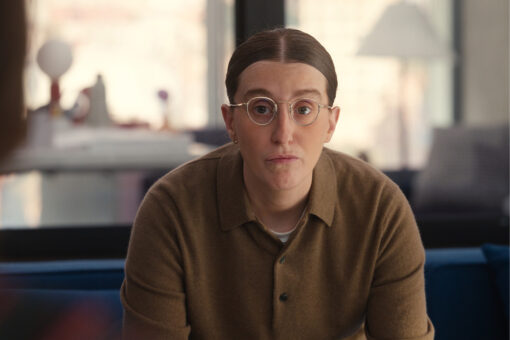When I came back to school for the first day of my senior year of high school, I felt, in a lot of ways, like a new person. I’d given up straightening my stubborn curls and learned the incredible power of styling creams. I’d traded the “please don’t look at me” jeans-and-oversized-hoodie look of freshman through junior year for way too much money spent at Delia’s on brightly colored sundresses and cardigans.
I felt fresh and new and a little bit transformed, and people … noticed that. People who had been cordial were suddenly friendly. People who were friendly were friendlier. I had never quite been invisible in the Mia Thermopolis “somebody sat on me again” sense, but the summer before senior year turned me into someone who wasn’t afraid to be seen. And strangely, even though it felt so big at the time, I’d almost completely forgotten about it — until I read the opening pages of Dahlia Adler’s newest YA novel, “Cool for the Summer.”
Even though it’s been years since that high school reinvention, “Cool for the Summer” is somehow exactly the story I needed, now, to remind me of what it felt like to experience that sudden brightness, how special it was.
More importantly, reading “Cool for the Summer” made me feel like I was a 17-year-old baby bisexual again, fresh off my own super intense summer of reinvention. As an actual 17-year-old, I don’t think there was a single book with a bisexual Jewish protagonist in my high school library. (And frankly? I looked.) To read one with not just one Jewish protagonist but two feels like reaching back in time and giving my teenage self a gift.
“Cool for the Summer” is a little bit like if “Grease” had an affair with Instagram. The main character, Lara, returns home after an intense, secret summer romance with Jasmine, the rich, beautiful daughter of her mom’s boss. When Lara shows up for her first day of senior year, glowing with new confidence (even if the reason why is still a secret), she finds that her newfound glow has caught the eye of Chase, the guy she’s had a crush on since middle school. It would be a dream come true, except that Jasmine, in pure “Grease”-inspired fashion, has turned up as a new student at Lara’s school, acting like she and Lara never met — and that the incredible summer they spent together never happened.
Through non-linear storytelling, “Cool for the Summer” flashes between the school year (and Lara’s budding relationship with Chase, who turns out to be just as sweet and swoon-worthy a boyfriend as Lara always hoped) and the summer (and the whirlwind that is Lara, Jasmine, and then Lara-and-Jasmine). Lara can’t experience any milestone with Chase without thinking of Jasmine — not just because she and Jasmine had so many “firsts” together, but because, after so many years of Chase being a fantasy, she doesn’t know how to not compare him to her experienced reality: Jasmine, and the summer nights (see what I did there?) they spent together, first as friends, then as more.
Lara’s identity narrative throughout the book is familiar to anyone who has read a queer coming-of-age novel where the main character doesn’t know they are queer to begin with. Lara constantly questions why things with Jasmine feel (and then, later, felt) so intense, why she can’t stop thinking of her after the summer is over, why she feels so possessive of Jasmine’s time and attention, especially when she should be focusing on Chase. That self-questioning narrative is recognizable to so many queer teens and adults, especially bisexuals, so much so that Lara admits to feeling a sudden well of jealousy when Jasmine comes out to her as bi: “She sounds so certain. She’s been certain, while I’ve been floating along, thinking we were both still in the same wired and nameless territory of summer. I don’t know what to say. I don’t know what to think. I don’t know what I am.”
(Not pictured: me, reading this as an adult, literally saying out loud, “Oh, honey!” Ah, the terrifying ordeal of simultaneously being represented by the characters in YA novels and also kind of wanting to adopt them. What life stage is that?)
Reading “Cool for the Summer” felt like a revolution — like coming to a new place in representation. While queer characters have had an explosion of representation in young adult fiction, as have Jewish characters, a bisexual Jewish romance focusing on two girls always seemed like such a niche market. When I was in high school, most of the books with Jewish characters were Holocaust stories, and you could find the five queer books in the school library if you really knew how to look, but otherwise you’d be better off grabbing a trip to Barnes and Noble and hoping your parents didn’t look too closely at whatever you came home with. To see a book not just with bi Jewish representation but with multiple Jewish characters who relate to Judaism in different ways (Lara is mostly secular, and confesses this to Jasmine like a crime, but receives only affection in return; Jasmine has Shabbat dinner every Friday with her Syrian Jewish mom, and when she brings Lara to one dinner, Lara feels overwhelmed with how much she enjoys it) feels huge.
A book like “Cool for the Summer” would have been a gamechanger for me — and so many queer kids like me — if it came out when I was a teenager, but reading it now, I’m taken back to how amazing and special it felt to be seen as myself, bright and new and visible, that first day of senior year. Reading this book feels like being seen, and for the queer Jewish kids today who comb the shelves in their libraries looking for themselves in the pages of a book, I hope they’ll catch the bi-flag-coded cover of “Cool for the Summer” and grab it. I hope they’ll spot the Star of David necklace in the little picture of Jasmine reflected in one of Lara’s sunglasses. And I hope they’ll feel a little brighter, a little more visible, when they read it, and know that their stories — with all of their identities represented — are important.
Because they are. They always were.



